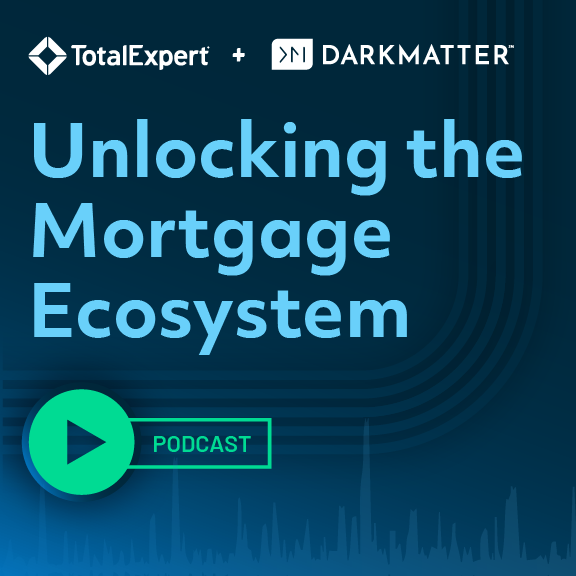By James Robert Lay, CEO, Digital Growth Institute
Since the early days of digital marketing, financial brands have relied on three primary channels to drive traffic to their website to generate and nurture leads for prospective loans and deposits:
- Ads (Display and remarketing)
- Social (Organic and paid)
- Search (Organic and paid)
However, the greatest threat to maximizing a financial brand’s future digital growth potential is the disruption two out of three of these digital channels is undergoing right now.
The Demise of Digital Ads
In 2017, I predicted the demise of digital ads going forward into the future because of data and privacy concerns. At the time, many people thought I was crazy because up to that point, digital ads were a primary strategy —the lifeblood— for future digital growth.
It was a big risk and gamble to take such a stance on the subject at the time but I was willing to plant a flag in the ground and bet on data privacy in a decentralized digital future.
Then, in September 2017, Apple’s native browser, Safari, introduced Intelligent Tracking Protection (ITP) and cookie time limits. Two years later, in September 2019, Firefox introduced Enhanced Tracking Protection (ETP) that blocks third-party cookies. And finally, in January 2020, Google made a big announcement they were phasing out third-party cookies over the next 2 years. However, that timeline was pushed back a bit with the new third-party cookie phase-out predicted to be completed by 2023.
Without getting too technical, third-party cookies are used by advertisers to collect data and information on consumers visiting websites; even when they are not on a brand’s specific website. For example, you could be logged into Facebook, surfing the web, and through third-party cookies, Facebook is tracking and collecting data on all of your digital activity. This data is then used by digital marketers to serve up ads unique to you.
Now, with the elimination of third-party cookies, marketing just became harder as marketing data will become even more fragmented and siloed into different digital “walled gardens” as data will no longer be shared across digital experiences and web properties.
What this decision means for brands is that it will render digital ads less effective and completely transform the entire landscape for digital ad companies not to mention entire digital marketing strategies.
With the removal of third-party cookies as an ad standard, the greatest impact financial brands will feel in their digital ad strategies will be with display ads and remarketing ads that were historically dependent on third-party cookie data for targeting.
In addition to third-party cookies crumbling, digital ad fraud, along with digital ad blockers, continue to increase year-over-year. In fact, according to Proxima, 60% of digital ad spend is wasted every year with up to 35% of all web activity being fraudulent while 54% of online ads are not even seen by a human.
Furthermore, no one likes being served an ad. You know this. I know this. This is why we subscribe to Netflix and Hulu for movies and video. This is why we subscribe to Spotify and Pandora for music. This is why we pay extra each month for YouTube premium so we don’t have to see ads every time we want to watch a cat video. It is also interesting to note study from HubSpot found 1 out of 3 people click on ads by accident.
So what is a financial brand to do if the future of digital ads might not be so bright?
Double down on social media?
The Sinking Social Media Ship
One of the biggest lies ever told at financial marketing conferences in the early days of social media was that social media was free. I am here to atone for my sins as I proudly proclaimed this myself.
However, nothing could have been further from the truth even though financial brands worked hard to build up fans and followers on different social platforms starting with Facebook and Twitter.
In the early days of social media, only a decade ago, an organic Facebook post had the potential to reach 15-20% of the total fans a financial brand had. For example, if a financial brand had 100,000 Facebook fans, their organic post published by their corporate account had the potential to reach 15,000 – 20,000 people… for FREE. It was the golden age of social media. Or so it seemed.
Because as ancient wisdom teaches us, nothing in life is free. This is exactly what happened as Facebook started to charge brands to access and reach the fans they had worked so hard to acquire. As a result, organic reach began to drop like a rock and at the end of 2021, the average reach for an organic Facebook is down to just 5.2%.
As James Del of Gawker wrote, “Facebook may be pulling off one of the most lucrative grifts of all time; first, they convinced brands they needed to purchase all their Fans and Likes — even though everyone knows you can’t buy love; then, Facebook continues to charge those same brands money to speak to the Fans they just bought.”
This makes the future of social media look more like the old days of cable TV channels that would charge brands to access their audiences to run ads.
Activate Your Biggest Advocates to Augment Traffic from Ads and Social
So if digital ads are going through a demise, and social media no longer holds the promise of being a “free” marketing channel like it did a decade ago, how can financial brands drive traffic to their website to generate leads for loans and deposits and maximize their digital growth potential?
Take a moment and think about this question for a minute.
Who are the biggest advocates of your financial brand?
Are they your account holders? Or are they your internal team? Those you work alongside in the trenches to transform lives of the people in the communities you serve so they then become advocates to their friends and family members.
Yes, there is a tremendous amount of opportunity to capture in the “R” of the BANCER’s strategy circle I write about in Banking on Digital Growth that comes from activating external advocates through ratings, reviews, and referrals.
But external advocacy only comes once you have buy-in and adoption for internal advocacy as your internal team must first be your financial brand’s biggest advocate in a digital world.
This is why EX –Employee Experience– is such a critical piece needed to maximize your future digital growth potential because a positive employee experience leads to a positive human experience that can be exponentially multiplied through a positive digital experience.
Growth can then be further multiplied when a positive Employee Experience creates a culture where Employee Expertise, and the sharing of that expertise, positions your financial brand beyond the commoditized products and services.
Money is Confusing and People Trust People
Money is an inherently complex subject and over 85% of Americans are stressed about their financial situation.
This stress takes a toll on their health, relationships, and overall sense of well-being.
People are looking for someone they can trust to guide them beyond this stress towards a bigger, better, and brighter future.
Trust is not built by promoting the same commoditized great rates, amazing service, and look-a-like laundry lists of product features.
Trust is built by sharing knowledge and expertise that helps first and sells second.
In fact, your financial brand can have the best marketing in the world but at the end of the day, the relationships people have with people at your financial brand will trump the relationship people have with your brand.
Going forward into the future, personal brands of individuals have the potential to be far greater and create more value than the corporate brand.
Research shared by Kerry-ann Betton Simpson, CMO of JMMB and a strong and vocal advocate for internal employee engagement and employee advocacy on social media, noted:
- 𝗘𝗺𝗽𝗹𝗼𝘆𝗲𝗲-𝘀𝗵𝗮𝗿𝗲𝗱 𝗽𝗼𝘀𝘁𝘀, 𝗼𝗻 𝘀𝗼𝗰𝗶𝗮𝗹 𝗺𝗲𝗱𝗶𝗮, 𝗲𝗻𝗷𝗼𝘆 𝘂𝗽 𝘁𝗼 𝟱𝟲𝟭% 𝗳𝘂𝗿𝘁𝗵𝗲𝗿 𝗿𝗲𝗮𝗰𝗵, than posts from the official company account
- 𝟳𝟲% 𝗼𝗳 𝗶𝗻𝗱𝗶𝘃𝗶𝗱𝘂𝗮𝗹𝘀 𝘁𝗿𝘂𝘀𝘁 𝗰𝗼𝗻𝘁𝗲𝗻𝘁 𝘀𝗵𝗮𝗿𝗲𝗱 𝗯𝘆 𝗽𝗲𝗼𝗽𝗹𝗲, more than content shared from the official brand channels
- 𝟵𝟬% 𝗼𝗳 𝗕𝟮𝗕 𝗯𝘂𝘆𝗲𝗿𝘀 𝗮𝗿𝗲 𝗺𝗼𝗿𝗲 𝗹𝗶𝗸𝗲𝗹𝘆 𝘁𝗼 𝗲𝗻𝗴𝗮𝗴𝗲 𝘄𝗶𝘁𝗵 𝘀𝗮𝗹𝗲𝘀𝗽𝗲𝗼𝗽𝗹𝗲 (𝗮𝗸𝗮 𝘆𝗼𝘂𝗿 𝗰𝗼𝗺𝗽𝗮𝗻𝘆 𝗲𝗺𝗽𝗹𝗼𝘆𝗲𝗲𝘀), who are seen as industry thought leaders
- 𝟮% 𝗼𝗳 𝗕𝟮𝗕 𝗯𝘂𝘆𝗲𝗿𝘀 𝗮𝗿𝗲 𝗺𝗼𝗿𝗲 𝗹𝗶𝗸𝗲𝗹𝘆 𝘁𝗼 𝗲𝘅𝗽𝗲𝗿𝗶𝗲𝗻𝗰𝗲 𝗶𝗻𝗰𝗿𝗲𝗮𝘀𝗲𝗱 𝘁𝗿𝘂𝘀𝘁 𝗶𝗻 𝗮 𝗯𝗿𝗮𝗻𝗱, as a result of thought leadership content shared by employees
As you look ahead towards a future that empowers internal team members –including branch managers, lenders, and leaders– to become digital advocates committed to sharing knowledge with others to generate website traffic and digital leads, there are three steps to guide them through when it comes to banking on expertise:
- Acquiring and unlocking expertise
- Communicating and sharing expertise
- Monetizing and optimizing expertise
Now is the time to start leaning into and leveraging one of the most basic human beliefs that people trust people. Now is the time to begin activating internal advocates to become marketing channels that can exponentially multiply the reach of content your financial brand produces. Now is the time to begin banking on the expertise by making a commitment to help first and sell second to generate even more loans and deposits by guiding people beyond financial stress towards a bigger, better, and brighter future.


